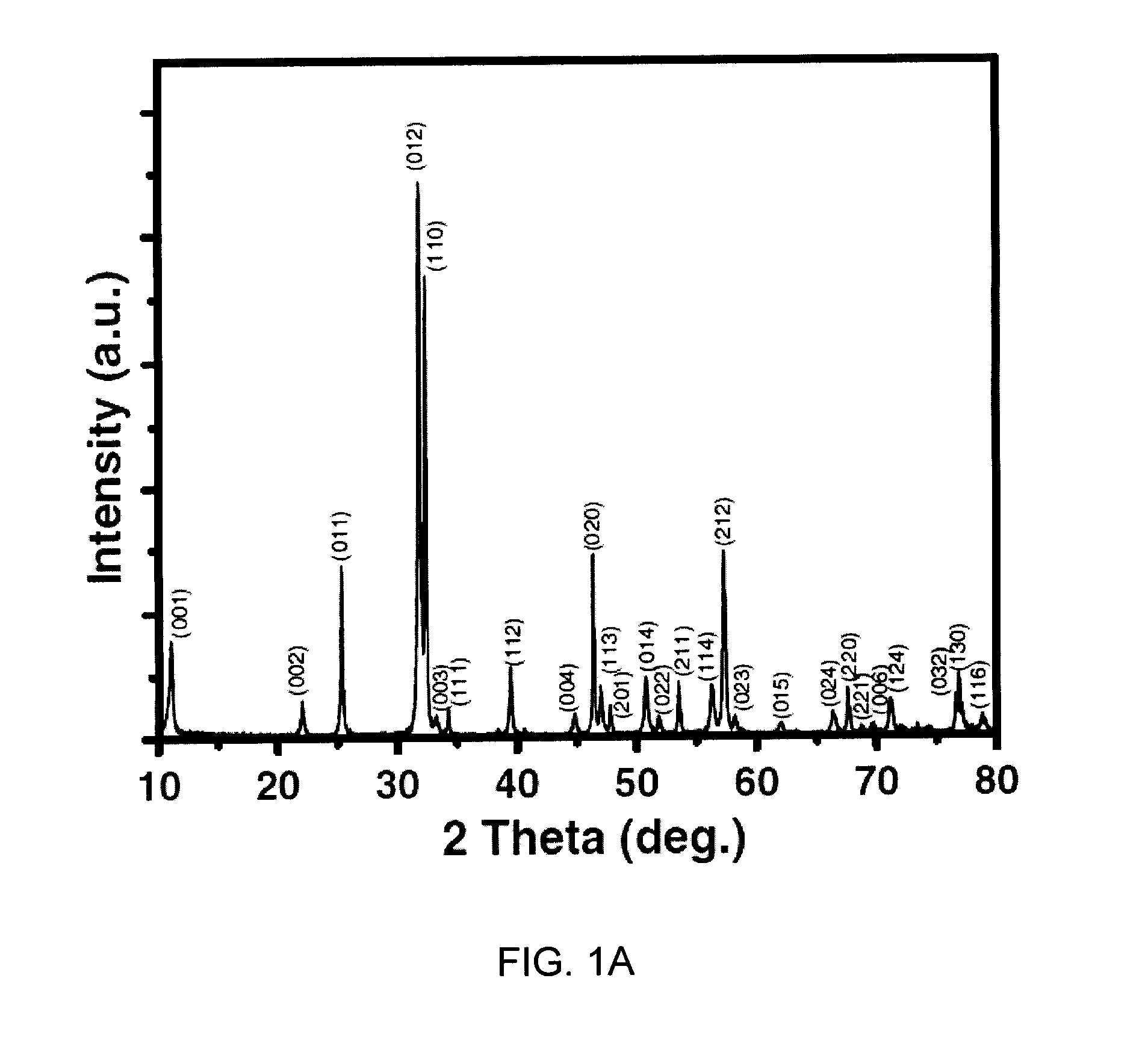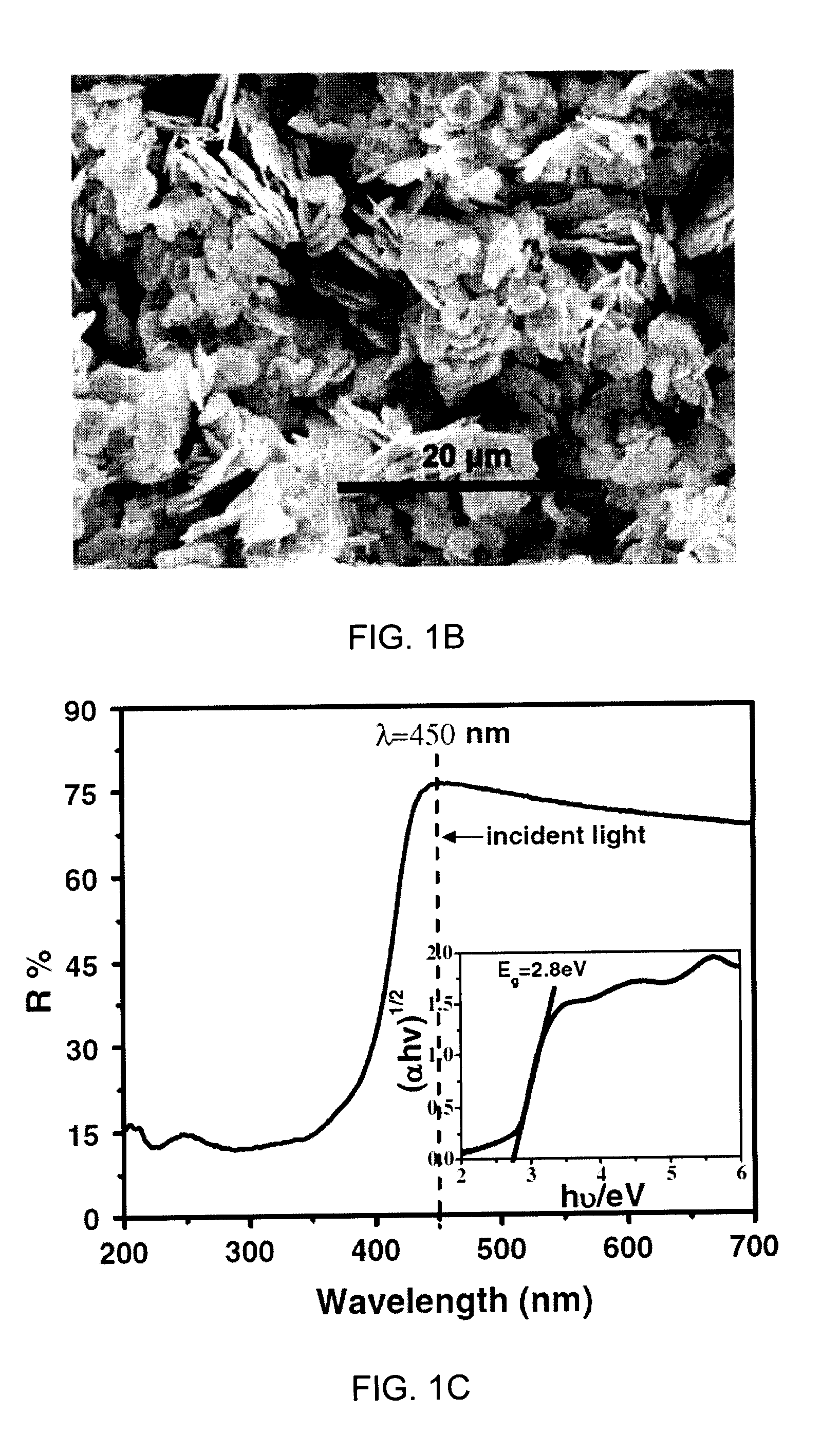450 nm visible light-induced photosensitized degradation of rhodamine b molecules over biobr in aqueous solution
a rhodamine b and visible light technology, applied in the field of visible light-induced photosensitized degradation of rhodamine b molecules in the presence of biobr, can solve the problems of rhb degradation and require a relatively large amount of biobr
- Summary
- Abstract
- Description
- Claims
- Application Information
AI Technical Summary
Benefits of technology
Problems solved by technology
Method used
Image
Examples
example 1
RhB Removal Under 450 nm Monochromatic Light Irradiation
[0039]In this Example, 450 nm monochromatic light was used for the irradiation. For the excitation of electrons from the occupied Valence Band (VB) into the empty Conduction Band (CB), absorption of energy is necessary which is equal or higher than Eg, i.e., hv≧Eg. From the UV-Vis absorption spectrum of RhB aqueous solution, it is clear that the RhB could be excited most effectively by a wavelength of 554 nm or even shorter, whereas the BiOBr semiconductor can be excited by a wavelength shorter than 440 nm. Therefore, the as-prepared BiOBr semiconductor cannot be excited by the monochromatic light centered at 450 nm, but RhB could be excited under such exposure conditions.
[0040]The photodegradation of RhB was carried out in a water (or ice-water mixture)-cooled cylindrical quartz beaker, equipped with an 500 W Xenon-lamp (CHF-XM500W, Beijing Trust Tech Co. Ltd.), a water IR-filter, and a 450 nm band-pass light filter (λ±10 nm)....
example 2
RhB Removal in Different BiOBr Dosages
[0043]The corresponding kinetic rates under different catalyst dosages are shown in TABLE 1 and FIGS. 2A and 2B. As expected, it was found that as the dosage of BiOBr increases, the removal efficiency increases, but almost reaches the saturation limit up to the value of 0.4 mg / mL (around 85% of removal efficiency was achieved and the wavelength of the characteristic peak of RhB was shifted from 554 to 530 nm). A further increase in catalyst dosage could not contribute to the apparent enhancement of removal process, which is in agreement with previous investigations on others photodegradation systems (Gondal et al., Appl. Catal. A. Gen., 397, 192-200, 2011; Chen et al., Water Res., 32, 3223-3234, 1998; Gondal et al., Chem. Eng. J., 165, 250-257, 2010—each incorporated herein by reference in its entirety).
TABLE 1EffectsDosage (mg / mL)k0 (mol / L / min)rDosage0.10.021970.73662effect0.20.049330.975250.30.064760.980370.40.057170.998140.50.055690.99115
example 3
RhB Removal in Different Reaction Temperatures
[0044]The dependence of removal efficiency of RhB from an aqueous solution on the reaction temperature was investigated as well, and the corresponding results are depicted in FIGS. 3A and 3B. The experimental conditions were as follows: C0=6 ppm, BiOBr dosage=0.04 g / 120 mL (0.33 mg / mL), pH=5.7, irradiation time=1 h. Apparently, the reaction temperature has a large effect on both the adsorption and photodegradation process. The adsorption removal efficiency decreases from 43 to 39% with increasing the adsorption temperature from 278 to 304 K (4.85 to 30.85° C.), revealing the exothermic nature of the adsorption processes. On the contrary, it was found that increasing the reaction temperature could boost the photodegradation activity, demonstrating the endothermic characteristics of the photodegradation process. From TABLE 2, it can be noticed that the constant k increases from 0.02608 to 0.0728 mol / L / min by increasing the reaction tempera...
PUM
 Login to View More
Login to View More Abstract
Description
Claims
Application Information
 Login to View More
Login to View More - R&D
- Intellectual Property
- Life Sciences
- Materials
- Tech Scout
- Unparalleled Data Quality
- Higher Quality Content
- 60% Fewer Hallucinations
Browse by: Latest US Patents, China's latest patents, Technical Efficacy Thesaurus, Application Domain, Technology Topic, Popular Technical Reports.
© 2025 PatSnap. All rights reserved.Legal|Privacy policy|Modern Slavery Act Transparency Statement|Sitemap|About US| Contact US: help@patsnap.com



